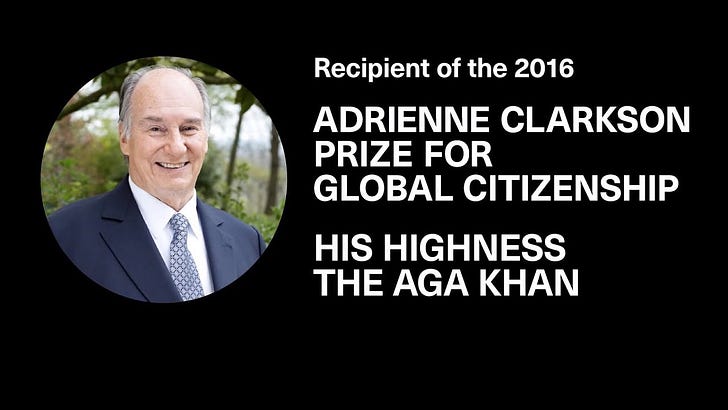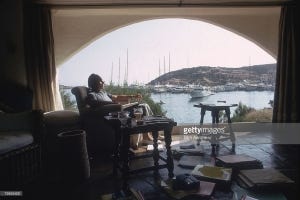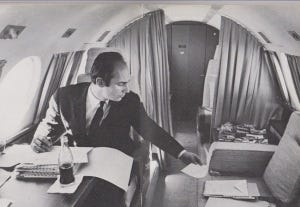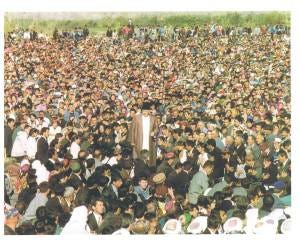The Secret Life of the Aga Khan
Through his words, through his actions, and through the results obtained by the institutions that he has founded and encouraged and nourished, he has become a light in much of the world’s conflicting darkness.
The Right Honourable Adrienne Clarkson
Watch: Five Minute Video by Right Honourable Adrienne Clarkson (Former Governor General of Canada) on the Aga Khan’s Life and Work:
His Highness Shah Karim al-Husayni Aga Khan IV is the 49th hereditary Imam of the Shia Ismaili Muslims and direct descendant of the Prophet Muhammad. This article looks at the Aga Khan’s life and mission, in which the Imam has worked quietly and tirelessly to serve and bring hope to millions of people worldwide, in the name of Islam. The Aga Khan has been widely recognized for his efforts in providing spiritual guidance and material assistance to the Ismaili Muslims, who are today spread over 25 countries, and for his vast contributions to quality of life in various communities worldwide. These include (courtesy of Ismailimail):
28 Title and State Decorations including being made an honourary Companion to the Order of Canada (2005) and Honourary Canadian Citizenship (2009);
21 honorary degrees, from universities representing the US Ivy League, Canadian Group of 13, UK’s Russell Group, and others;
16 civic honours, representing 9 investures as Foreign Member to several state academies (for the creation of new knowledge – promoting research and stimulating the enhancement of thought, literature, language and other forms of national culture) and 3 Leadership posts at influential European Institutions to promote diplomacy, culture and development;
30 awards spanning domains such as architecture and the built environment, restoration and the revival of culture, education, health, diplomacy and peace, philanthropy, sports, corporate enterprise
delivered over 70 high profile keynote addresses.
Overnight my whole life changed completely. I woke up with serious responsibilities toward millions of other human beings.
– Imam Shah Karim al-Husayni Aga Khan IV,
(Sports Illustrated Interview, August 10, 1964, NanoWisdoms
http://www.nanowisdoms.org/nwblog/10341/)
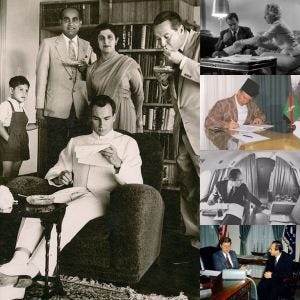
On July 11, 1957, Shah Karim al-Husayni Aga Khan succeeded his grandfather, Imam Sultan Muhammad Shah Aga Khan III as the hereditary Imam of the Shia Ismaili Muslims at the age of 20 while still a sophomore at Harvard College. The Ismailis are a branch of Shia Muslims who recognize the continuation of the spiritual authority of the Prophet Muhammad through a lineage of Imams descended from the Prophets cousin and son-in-law, Hazrat ‘Ali ibn Abi Talib. Today, Imam Shah Karim al-Husayni, known publicly as His Highness Prince Aga Khan IV, is the forty-ninth hereditary Imam of the Ismaili Muslims.
Historically, Ismailis are united by a common allegiance to the living hereditary Imam of the time in the progeny of Islam’s last and final Prophet Muhammad (may peace be upon him) through his daughter Fatima and her husband, Hazrat Ali, the Prophet’s cousin and the first Shia Imam.
– Imam Shah Karim al-Husayni Aga Khan IV,
(The Delegation of the Ismaili Imamat Foundation Stone Ceremony, Ottawa, June 6, 2005, NanoWisdoms
http://www.nanowisdoms.org/nwblog/7314/)
Unlike the Augustinian and Protestant traditions of Christianity, the Ismaili Imam’s role and mandate requires him to lead the Ismaili Muslims in both the spiritual interpretation of Islam as well as the improvement of the quality of life of the Ismailis and those among whom they live. The Aga Khan describes his mission as follows:
I, as Imam of the Ismailis, have responsibility for and supreme authority over the community. This means taking the lead in the practice of the religion but also engaging in ongoing activities to improve the Ismailis’ quality of life and to help “every Ismaili in the world who is in difficulties”. It is true that today the role of the Aga Khan, 49th hereditary Imam of the Shia Ismaili Muslims, is to interpret Islam.
– Imam Shah Karim al-Husayni Aga Khan IV
(Paris Match Interview, Caroline Pigozzi, ‘The Confessions of the Aga Khan’, NanoWisdoms
http://www.nanowisdoms.org/nwblog/7190/)
Over the past fifty years, the Ismaili Imam has been interpreting Islam and teaching the esoteric interpretation of the Qur’an. At the same time, the Ismaili Imam’s mission to uplift quality of life for all human beings requires him to be deeply involved in all spheres of human activity. Many people, especially in the Western world, have difficulty understanding this because they expect religious leaders to devote themselves entirely to spiritual matters. But the division between spiritual life and physical life does not exist in Islam and the Aga Khan, as the Ismaili Imam of the time, exemplifies the union of faith and world in all of his activities:
An Imam is not expected to withdraw from everyday life. On the contrary, he’s expected to protect his community and contribute to their quality of life. Therefore, the notion of the divide between faith and world is foreign to Islam. The Imamat does not divide world and faith. That’s very little understood outside Islam. In the West, your financial systems are all built around that divide.
– Imam Shah Karim al-Husayni Aga Khan IV,
(Vanity Fair Interview, James Reginato, ‘The Aga Khan’s Earthly Kingdom’, NanoWisdoms
http://www.nanowisdoms.org/nwblog/10388/)
The Ismaili Imam is the Founder and Chairman of the Aga Khan Development Network (AKDN) – a collection of development agencies who seek to improve quality of life and provide relief in the areas of poverty, health, architecture, media, governance, education, finance, economic development, building, environment, etc. [Read more at AKDN website]
The work of the AKDN is not charity in the Western sense of handouts, but rather, its mission is to restore human dignity by empowering people to become self-sustaining. The work of the AKDN agencies is based on translating the Ethics of Islam into institutional endeavors. [Read more at the AKDN Ethical Framework]
• AKDN has been improving the quality of life of millions of human beings for over 100 years;
• AKDN operates in over 35 countries, employs 80,000 people and mobilizes over 100,000 volunteers worldwide;
• AKDN’s annual budget is over $625 million and funded in large part by Imam Shah Karim al-Husayni Aga Khan IV;
• AKFED (Aga Khan Fund for Economic Development) generates $3.5 billion in annual revenue and all profits are reinvested for development;
AKDN raised $1 billion from its own resources and partners for social, economic and cultural development in Afghanistan;
• AKDN through the Aga Khan Trust For Culture (AKTC) has executed 8 projects to restore or create parks, historic sites and gardens – which attract 5 million people every year and 43 million visitors since opening;
• AKDN has created 5 power plants providing electric power to 10 million people in Asia and Africa;
• AKDN runs over 200 health centres, hospitals, clinics and community health programs, allowing over 5 million people to obtain healthcare every year;
• AKDN has helped 8 million people achieve greater food security and high income through agricultural and disaster preparedness projects;
• AKDN has plants over 1 million trees every year; 134 million trees have been planted in Asia and Africa;
• AKDN provides 17 million people in Asia and Africa access to financial services through various financial initiatives including micro-finance;
• AKDN has established and runs 200 schools (including IB schools) and 2 universities (AKU, UCA) with campuses in 9 countries – helping educate 2 million students per year;
• AKDN supports 40,000 civil society organizations with a membership of over 1.3 million people;
• AKA (Aga Khan Award for Architecture) gives $1 million in prize money for every award cycle and has a database of 9,000 architectural projects;
• AKDN provides 1.3 million people with safe drinking water, sanitation and sewage facilities;
In accordance with his mandate, the Aga Khan performs the functions of Imamat throughout his entire life. The Aga Khan’s Imamat duties are the highest priority in his life and encompass all of his mental and physical energies:
For me, the notion of holidays does not exist. I must fulfill my function of Imam without cessation until my death. A minister can go [on vacation]: someone assures his interim during the months when he goes on leave. This is not the case for me. The function of the Imam is attached to my person: I have to give myself entirely to the activity which it symbolizes; to try apprehending everything which the human intellect can remember.
– Imam Shah Karim al-Husayni Aga Khan IV
(Elle Magazine Interview [translation from French], August 20, 1969, NanoWisdoms
http://www.nanowisdoms.org/nwblog/1527/)
A Day in the Life of the Aga Khan
Since the 11th of July, 1957 my aims and ambitions have been devoted to help and guide my spiritual children in spiritual and worldly matters.
– Imam Shah Karim al-Husayni Aga Khan IV,
(Karachi, December 13, 1964; Source: Simerg)
The Ismaili Imam describes his daily and annual schedules in several interviews between 1965 and 1994. The Imam’s daily life is exhausting and filled with work and responsibilities which stem from his duties toward the Ismailis and from his position as the Chairman of the Aga Khan Development Network. Contrary to the life of glamour and extravagance falsely attributed to him by the press, the Aga Khan is a workaholic. For several months of the year, the Ismaili Imam is visiting different countries to carry out his vast development work and practically lives on his airplane.
Since I have left Harvard I’ve traveled every single year amongst the community. One journey or two journeys, three journeys, four journeys a year to the communities depending on what the problems are and whether it is urgent that I should be there or not. Generally it would be visits to the schools or the hospitals or the sports centres or a mosque in the morning, appointments with leaders pending, planning development of the community in the future and I must say that if I am on to it, it’s just a series of appointments, discussions, visits and it’s very, very rough on everyone including the members of the community who follow these tours.
– Imam Shah Karim al-Husayni Aga Khan IV,
(Pacemakers: A Man of the World – The Aga Khan, 1967, NanoWisdoms
http://www.nanowisdoms.org/nwblog/10214/)
I allocate 90% of my time at Geneva and Aiglemont to institutional tasks. Our offices are open seven days out of seven, because with us Muslims, Sunday corresponds with Friday. I must be available on the weekend to receive institutional directors who pass through. My life is highlighted by official visits to the twenty or so countries where members of the community live, which keep me moving from one end of the year to the next. This takes approximately six-hundred flight hours per year! To gain time, I always make sure I’m accompanied in my private plane by some assistants.
– Imam Shah Karim al-Husayni Aga Khan IV,
(Paris Match Interview, December 15, 1994, NanoWisdoms
http://www.nanowisdoms.org/nwblog/850/)
Even when the Imam is not travelling and residing in Paris or Sardinia, most of his day is spent working. The Aga Khan rises early at around six in the morning, hardly goes out, and works steadily into the night.
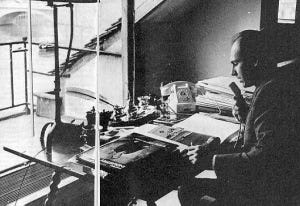
I’m usually up around six in the morning and I try to work from around seven onwards until around ten o’clock in the morning, independently of the secretaries. Then the secretary will come in at ten and we will work until around eleven-thirty, twelve. Then I will have appointments which will cover an enormous field of problems and then lunch, usually at home I don’t go out much. I do not like going out very much indeed. I would have more appointments in the afternoon, usually work in the evening, with the secretary again, and then in the evenings it depends entirely…either I stay at home or I will go out with friends. But generally speaking, in the last two or three years I’ve hardly been out at all because if you start early in the morning you really can’t keep going till four the next morning.
– Imam Shah Karim al-Husayni Aga Khan IV,
(Paris Match Interview, December 15, 1994, NanoWisdoms
http://www.nanowisdoms.org/nwblog/850/)
Unlike other public figures, the Imam does most of his work away from the public eye and is usually only seen in public settings when he is taking a rare break. The interviewer, Nicholas Tomalin of the Sunday Times, notes this in his below conversation with the Imam about his work schedule:
Interviewer: I think another reason why your role is underrated in the West is that our important public figures are rather expected to be extremely sombre and dutiful in public and enjoy themselves in private. Whereas you seem to enjoy yourself in public and do your serious work in private.
Aga Khan: It is fatuous to think that if I am on the racecourse in the afternoon I have to abandon everything else to get there. That just isn’t the case.
Interviewer: You have explained how it is not inconsistent for you to perform the roles of Pope, Head of State, racehorse owner and real estate developer all at the same time. But how do you manage it, physically? If I were in your position I would feel I couldn’t do any single job adequately.
Aga Khan: Of course the horse-racing and the Sardinia venture are incidental; if I felt for one moment they were making my religious and community work suffer I would abandon them. But I have a working day that allows me to do all these things. I get up at six each morning. I have a quick breakfast, then dictate letters and memoranda for a couple of hours. During the rest of the morning I meet people who may be from any of my activities.
Interviewer: Don’t you feel bewildered, sometimes, seeing a jockey, then a distinguished Muslim, then a Sardinian businessman, then a politician — isn’t the contrast sometimes too abrupt?
Aga Khan: Yes sometimes I do get dizzy. It is difficult to switch. But then I have an early lunch and afterwards, Perhaps, go racing for a couple of hours or if I am in Sardinia go on the beach. In the afternoon I work again, seeing people or dealing with reports and suchlike that I may not have to answer but still must read. I work till nine each evening because I must have as long a working day as possible, racing or no racing. And after that I have dinner, about nine thirty. After that I go to bed.
Interviewer: Do you go out in the evenings?
Aga Khan: Don’t be ridiculous. I can’t. I am too tired. I think in the past year, for instance, I’ve seen no plays and only one film.
Often Smeared and Misrepresented by the Press
I am not affected by suggestions in print that I live a luxurious Western life, while most Ismailis live in underdeveloped Eastern countries. These are just smears by cheap magazines. Serious publications are aware of the work we do and of our achievements in many countries.
– Imam Shah Karim al-Husayni Aga Khan IV
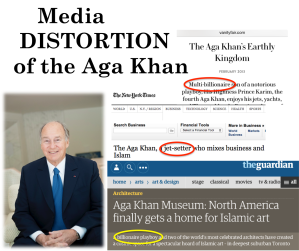
Despite the fact that the Ismaili Imam’s daily life mostly consists of working for and serving his community, the Western press continues to provide unfair and inaccurate coverage about the Aga Khan. Several examples of this inaccurate reporting of the Ismaili Imam are related by his biographer Willi Frischauer:
As the new Aga Khan, the twenty-year-old prince and religious leader became public property, a prime target for insidious commentaries. An early report claimed to reveal a second secret Will of the Aga Khan and talked of frantic attempts to compose a violent quarrel between Prince Karim and the Begum involving millions, before it came before the courts. There was no truth in the story. With as much gusto Prince Karim’s private life was examined in an Arabian Nights aura which turned him overnight from a boyish, sports-loving Harvard man into an Eastern Romeo. Presenting him as a worthy son of the amorous Aly reports described a veritable world war in which young ladies of every nationality seemed to fight for the heart and the hand of the young Aga Khan. The frivolities which occupied the daily Press could not have been more remote from the young Aga Khan’s preoccupations on the eve of his trip to Pakistan, the first big test of his career as Imam.
“Such is the power of the popular Press,” Karim said in an address to the Royal Commonwealth Society at Oxford, a little later, “that few people know very much about the Ismailis today, except that the Aga Khan is their leader, is weighed in diamonds from time to time, owns a number of race- horses, and (so far as I am concerned at any rate) appears to be perpetually on the brink of matrimony.”
When, on one of his rare excursions to a night-club, he was seen dancing with a pretty girl, the paparazzi were convinced they had discovered a new ‘girl-friend’. The young lady was his half-sister Yasmin whom he was giving a night out in Paris.
– Willi Frischauer, (The Aga Khans, 216-217; 239, 261)
Today the most repeated descriptions used by various news and media outlets term the Aga Khan as a “billionaire playboy”, “billionaire philanthropist”, “son of a playboy”, “lavish”, or “extravagant”. Meanwhile, the Imam’s daily toil and hard work continues to be ignored for the most part in the Western media as noted by his biographer Willi Frischauer:
Little of all this percolated to Europe, where the Aga Khan continued to be regarded simply as a rich young man, less of a playboy than his father, less of a character than his grandfather but as a handsome, pleasant young aristocrat eminently eligible for a place in the gossip columns.
– Willi Frischauer, (The Aga Khans, 272)
Due to the intrusions and constant interference of the Western press, the Ismaili Imam had to adjust his daily activities and take numerous precautions. Consequently, the Aga Khan no longer lives a normal private and social life that most people are entitled to. In his own words, the Imam describes to Sports Illustrated the measures he has had take in order to avoid the intrusive media:
I take all sorts of precautions when I go out with friends. I have taught myself not to show any emotion in public places. I never sit next to a woman with whom the press is trying to link me. Here in Gstaad I go often to a bistro outside the village for a fondue because the proprietor will not let anyone take pictures in his establishment. I stopped going to certain Paris theatres because I discovered they were tipping off the press to my presence. I realise that I may seem extreme on the subject, but do not forget that my mail has been stolen and my servants bribed. Close personal friends have taken private snapshots of me in my home and then sold them to magazines. I have been blackmailed on the telephone. All I desire is to have my private life respected. Is that unreasonable?
– Imam Shah Karim al-Husayni Aga Khan IV,
(Sports Illustrated Interview, August 10, 1964, NanoWisdoms
http://www.nanowisdoms.org/nwblog/10341/)
As for the slanderous reports about him in tabloids, the Ismaili Imam pays no attention to such “smears” and instead focuses on his work and mission:
I have always refused to talk about my private life. Any public man must have the right to have a private life and keep it private. In the West, intrusion into personal and private affairs is widely tolerated; this is not so in the East. Articles such as I have in mind do nothing for a public enlightenment; they are just a way of selling a magazine to a certain type of reader interested in such things.
– Imam Shah Karim al-Husayni Aga Khan IV,
(Sunday Telegraph Magazine Interview, ‘The Quiet Prince of Islam’, May 27, 1979, NanoWisdoms,br>http://www.nanowisdoms.org/nwblog/1916/)
The Myth of the Aga Khan’s Affluence
I do not seek to do things, in fact I have stayed away from things which did not seem to me to be good sense, where it was affluence for the sake of affluence.
– Imam Shah Karim al-Husayni Aga Khan IV
As for the Western media’s relentless charge that the Aga Khan lives an ‘lavish’ or ‘affluent life’, the Ismaili Imam has answered and dismissed the veracity of these claims on multiple occasions.
I am not affected by suggestions in print that I live a luxurious Western life, while most Ismailis live in underdeveloped Eastern countries (he went on). These are just smears by cheap magazines. Serious publications are aware of the work we do and of our achievements in many countries. Such smear stories never appear in Asian publications.
– Imam Shah Karim al-Husayni Aga Khan IV,
(Sunday Telegraph Magazine Interview, ‘The Quiet Prince of Islam’, May 27, 1979, NanoWisdoms
http://www.nanowisdoms.org/nwblog/1916/)
GB: It is often suggested that your affluent lifestyle is very different from that of most Ismailis who live mostly in the poverty of the Third World. Do you think that is a fair comment?
Aga Khan: I think that affluence is perhaps the wrong terminology. I do not seek to do things, in fact I have stayed away from things which did not seem to me to be good sense, where it was affluence for the sake of affluence. I’ll give you an example. I have a private aircraft, but that aircraft today is flying between 450 and 600 hours a year. You take 600 hours of time — that translates into approximately two months of working days. I cannot afford, nor can people who work in my organisation, to eliminate two months of working time…if you have to run an organisation in as diverse areas as I do there are certain things you’ve got to do to be efficient. When you talk about extremely poor people, of course there are poor people throughout the developing world and there will be poor people for years and years. I think they would ask whether the Imamat as an institution was helping them as best as it could and I think it would be true to say that the Imamat is assisting them.– Imam Shah Karim al-Husayni Aga Khan IV,
(The Age Interview, ‘Aga Khan: Enigma of East and West’, July 14, 1979, NanoWisdoms
http://www.nanowisdoms.org/nwblog/10329/)
The Aga Khan only has a secretariat and a private plane because these assets are essential to his ability to carry out his duties as the Ismaili Imam of a community spread out over 35 countries. The Imam’s biographer, Willi Frischauer, captured what went through the Imam’s mind when he undertook the purchase of his first aircraft:
Each decision involved big issues. Symbolising the expansion of his interests, he [the Aga Khan] took delivery of the new Gruman Gulfstream jet, twice the size and cost of the old Mystere: “It will enable me to visit my community more frequently,” he told me.
– Willi Frischauer, (The Aga Khans, 281)
At the personal level, the Aga Khan does not live affluently at all. During his final year at Harvard, when the Imam completed the last 1.5 years of study in just 2 semesters, the Aga Khan owned no car and took public transit despite having access to the funds of the Imamat. Even his Harvard roommate Stevenson noticed how the Imam owned very little in personal assets:
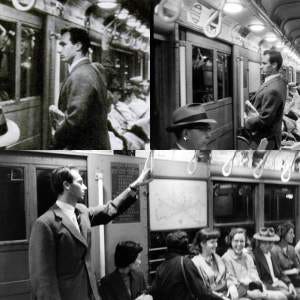
“K. Khan,” Stevenson said, “was a charming fellow with a cracking wit.’ According to his roommate, he did not go in much for clothes and became known as “that guy who had only one pair of shoes”. “During the time I knew him,” said Stevenson, “he owned two suits but I never saw either of them pressed. He had about two dozen neckties but they were all the same colour.”
– Willi Frischauer, (The Aga Khans, 191)
Decades later in 1970, the Imam’s mother continues to note how it is impossible to convince the Aga Khan to even buy a new suit and the Imam’s friends have noticed how there are holes in his shoes:
When the Aga Khan enters, it is with a burst of youthful but well-controlled energy. He wears a sober dark suit, white shirt and an unobtrusive tie. He looks elegant whatever he wears, rather like an English squire who sports his shabbiest jacket during weekends on his estate. His mother says that it is a job to get him to buy a new suit, and friends have noticed holes in the soles of his shoes. One of them says: “The Aga Khan wears a French smile and English socks—not a bad combination.”
– Willi Frischauer, (The Aga Khans, 14)
While many people charge the Imam with “extravagance” for owning property in Sardinia and developing its tourism industry, they would be surprised to learn the actual reason why the Ismaili Imam even spends some of his time there. The Aga Khan was overburdened with work and frustrated with the Western media’s misunderstanding of his role as Imam so he sought to find a place where he could find some calm and privacy:
But after my grandfather died I found the work so onerous, and there was so much misunderstanding here about the Imam and the Ismailis, that I felt I had to find a place where I could go and not be disturbed. So I joined a small group that had interests in Sardinia and found myself caught in a development that just grew. We found the place so beautiful, and we were so happy, that we decided we had to be very careful, because if not the place would simply become another ugly, over-crowded tourist centre.
– Imam Shah Karim al-Husayni Aga Khan IV
(The Sunday Times Interview, ‘The Ruler Without A Kingdom’, NanoWisdoms
http://www.nanowisdoms.org/nwblog/1400/)
The Aga Khan’s development projects in Sardina have proven to be an immense asset to the country and the growth of tourism,, as he himself explained:
It has transformed the country. Tourism is the one way you can bring prosperity to a place that has nothing except undeveloped beauty. I’ve been amazed how many political leaders in Africa and the Middle East have said, “Come and do the same thing to us.”
– Imam Shah Karim al-Husayni Aga Khan IV
(The Sunday Times Interview, ‘The Ruler Without A Kingdom’, NanoWisdoms
http://www.nanowisdoms.org/nwblog/1400/)
Sacrifices: The Aga Khan’s Personal and Family Life
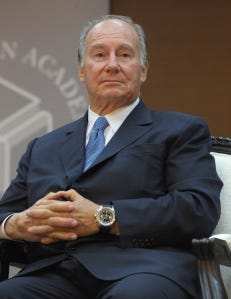
I hope to reorganise my life so as to have a little more time to be with my wife — and my children — though not at the expense of the community.
– Imam Shah Karim al-Husayni Aga Khan IV
Fulfilling the mandate of the Imamat, being responsible for the spiritual and material well-being of millions of souls, and working tirelessly to raise quality of life is an impossible task for any normal human being. Nevertheless, the Ismaili Imam has taken on this mission despite the immense sacrifice and toll on his personal and family life:
Anyone facing a difficult situation has a certain solitude. But my days are occupied. I have no time to think about myself. I have moments of fatigue, of worry, but without having the feeling of abandonment. I am engaged. I have to weigh, reflect, seek to make a wise decision. But with my advisors, I escape isolation. Responsibility is a burden which we love. I received from my grandfather heavy responsibilities, but they are not weighty. It is not a burden. It is a pleasure to devote oneself to such a community, to work for people. Responsibilities are a burden we love to bear.
My social life is practically nonexistent. As an owner of racehorses, I can be in the galleries of the day Prix de l’Arc de Triomphe, is all. In the summer I can be on the beach in Sardinia but practically all my time is devoted to the Ismailis in Sardinia. In Muslim life, you have to live life everyday. It was therefore impossible to stay cloistered, away from even mundane events.
– Imam Shah Karim al-Husayni Aga Khan IV,
(Elle Magazine Interview [translation from French], August 20, 1969, NanoWisdoms
http://www.nanowisdoms.org/nwblog/1527/)
The demands of the Imam’s mission and extensive work have also taken a toll on his family life. The Imam even makes his decisions on whom and when to get married based on the well being of the Ismaili Muslim community. The Aga Khan even gives the Ismaili community greater priority in his life than his own wife and children. The Aga Khan’s biographer Willi Frischauer records the Imam saying the following when he married his first wife Begum Salima in 1969:
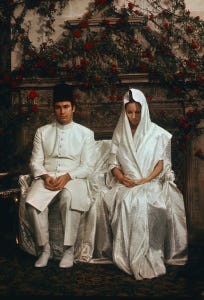
I would not marry a woman who I did not believe could help me. I hope to reorganise my life so as to have a little more time to be with my wife — and my children — though not at the expense of the community.
– Imam Shah Karim al-Husayni Aga Khan IV,
(Willi Frischauer, The Aga Khans, 283)
In an interview given ten years after his first marriage, the Imam described how his spiritual and material responsibilities keep him away from seeing his wife and children:
AM: You have told me very little about your family?
Aga Khan: The burden of work and travel is very severe. So although I am extremely fortunate to have a wonderful wife and children, I can’t spend as much time with them as I wish. But I hope to have more time for my family later on. (Interviewer: He said exactly the same on the eve of his wedding ten years ago).
The Aga Khan’s Financial Sacrifices: Hundreds of Millions of Dollars over 50 Years
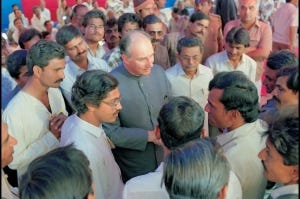
The Imamat revenue is given by the community to the Imam. He has a responsibility to manage the Imamat revenue…. I would say easily 98% of those funds, and in fact at times much more than 98%, in fact probably of the order of 150%, goes back to the community…and in fact, as I said, the Imamat is spending on many occasions more than it actually has.
– Imam Shah Karim al-Husayni Aga Khan IV
(BBC Radio 4 Interview, 6 September 1979, NanoWisdoms
http://www.nanowisdoms.org/nwblog/1988/)
Since he became the Imam of the Ismaili Muslims in 1957, the Aga Khan has received religious dues from his followers called zakat or dasond. These religious dues are given to the Imam by his murids as a key practice of Shia Islam and the Imam manages and spends the religious dues on the community and institutional development that benefits all people. However, the religious dues given by the Ismaili Muslims are never sufficient to cover these needs and the Aga Khan has consistently drawn upon his own personal funds to support the institutional needs of the Ismaili Muslims and other communities.
From 1960 to the present day, there are a number of documented examples of the Imam spending his own money to sustain the institutions of the Ismaili Muslim Community and the Aga Khan Development Network. Just a few of these instances are listed below courtesy of The Essential Ismaili:
The Aga Khan (1960-1969): over £10,000,000 in various projects
1960: The Aga Khan personally injects £300,000 into Diamond Jubilee Investment Trust when it suffered a shortage of liquidity. 10
1960: The Aga Khan goes on a “spending spree”, remarking that “I want to use as much as possible of my money for the benefit of the community.” He provides £200,000 for two textile factories, 50 auto-rickshaws, equipment for a canvas factory whose profit supported the Girls Academy. He donated funds to create the Prince Aly Khan Library at Karachi University and approved plans for a huge new jamatkhana in Garden district of Karachi. 11
1960: The Aga Khan starts discussions to launch an East African newspaper for which he was prepared to invest £1,000,000. 12
1963: The Aga Khan starts planning to launch I.P.S. “The amount needed to launch three East African I.P.S. companies — in Kenya, Uganda and Tanganyika — was £1 million but when, even at this late stage, doubts were raised, the Aga Khan simply said: ‘I will finance it!’ and — proof of his confidence in ultimate success — put up nearly the whole amount.” 13 When a project under consideration by I.P.S. was not financially viable and local officials said “There is no market, Your Highness, it will not pay. You will never get your money back.” The Aga Khan replied, “Never mind, my spiritual children expect me to help them — whatever the cost, help them I shall!” 14
Late 1960s: The Aga Khan committed to fund the £4.5 million to £5 million required for the Aga Khan Hospital and Medical College in Karachi, but agreed to let others have the opportunity to participate. 15
1965: The Aga Khan was considering “investments of two or three million pounds in individual African countries” because, he said, “I would put money in if I also felt it would help the community that’s living there. But this would be my own investment, a personal thing.” 16
1969: The Aga Khan marries, remarking that the community would still come first: “I hope to re-organise my life so as to have a little more time to be with my wife — and my children — though not at the expense of the community.” 17
The Aga Khan (2007-2012): $140 million of personal funds poured into just the Aga Khan University over just 4 years
2007: The Aga Khan covers $25.8 million of the Aga Khan University’s $26.2 million operating deficit for 2007. 18
2008: The Aga Khan covers the Aga Khan University’s $27.1 million operating deficit for 2008 plus an extra $5 million. 18
2008: The Aga Khan covers the $46.2 million cost, entirely, of the Heart & Cancer Centre, Nairobi. 19
2011: The Aga Khan covers $17.0 million of Aga Khan University’s $20.0 million operating deficit for 2011. 20
2012: The Aga Khan covers $17.0 million of Aga Khan University’s $19.0 million operating deficit for 2012. 20
The Secret of the Aga Khan: A Selfless Life of Service

We are honouring an exceptional man. We are honouring a great friend of humanity, a courageous visionary, a builder of bridges between religions and society.”
(His Excellency Dr. Frank Walter Steinmeier, German Foreign Minister, on presenting the 2006 Tolerance Award of the Evangelical Academy of Tutzing, Germany – May 20, 2006)
Imam Shah Karim al-Husayni Aga Khan IV has been widely recognized for his efforts in providing spiritual guidance and material assistance to the Ismaili Muslims, who are today spread over 25 countries, and for his vast contributions to quality of life in various communities worldwide. These include (courtesy of Ismailimail):
28 Title and State Decorations;
21 honorary degrees, from universities representing the US Ivy League, Canadian Group of 13, UK’s Russell Group, and others;
16 civic honours, representing 9 investures as Foreign Member to several state academies (for the creation of new knowledge – promoting research and stimulating the enhancement of thought, literature, language and other forms of national culture) and 3 Leadership posts at influential European Institutions to promote diplomacy, culture and development;
30 awards spanning domains such as architecture and the built environment, restoration and the revival of culture, education, health, diplomacy and peace, philanthropy, sports, corporate enterprise
delivered over 70 high profile keynote addresses.
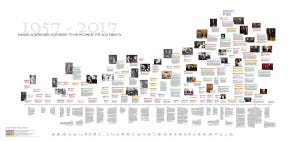
Amidst the worldwide recognition of his services and despite the media’s inaccurate aspersions about his private life, the Ismaili Imam Shah Karim al-Husayni Aga Khan IV continues to maintain that serving the Ismaili Muslim Community remains the only thing of real significance in his entire life.
As you know I am ambitious for my Jamat, I’m ambitious for my Jamat worldwide. Wherever a murid is living, he or she is of immediate concern to the Imam of the time. And this has been my life since 1957 and it will continue to be my life.
– Imam Shah Karim al-Husayni Aga Khan,
(Institutional Dinner, Nairobi, Kenya, July 15, 2011, NanoWisdoms
http://www.nanowisdoms.org/nwblog/9952)
Footnotes
Willi Frischauer, The Aga Khans, (The Bodley Head, 1970, p58)
Willi Frischauer, The Aga Khans, (The Bodley Head, 1970, p59)
Willi Frischauer, The Aga Khans, (The Bodley Head, 1970, p122)
Willi Frischauer, The Aga Khans, (The Bodley Head, 1970, p130)
Willi Frischauer, The Aga Khans, (The Bodley Head, 1970, p155)
Willi Frischauer, The Aga Khans, (The Bodley Head, 1970, p158)
Willi Frischauer, The Aga Khans, (The Bodley Head, 1970, p180)
Willi Frischauer, The Aga Khans, (The Bodley Head, 1970, p193)
Willi Frischauer, The Aga Khans, (The Bodley Head, 1970, p195)
Willi Frischauer, The Aga Khans, (The Bodley Head, 1970, p236)
Willi Frischauer, The Aga Khans, (The Bodley Head, 1970, p241)
Willi Frischauer, The Aga Khans, (The Bodley Head, 1970, p243)
Willi Frischauer, The Aga Khans, (The Bodley Head, 1970, p253)
Willi Frischauer, The Aga Khans, (The Bodley Head, 1970, p255)
Willi Frischauer, The Aga Khans, (The Bodley Head, 1970, p258)
The Sunday Times Interview, Part II, Nicholas Tomalin (London, United Kingdom), 19 December 1965
Willi Frischauer, The Aga Khans, (The Bodley Head, 1970, p268)
2008 Aga Khan University Annual Report, p72
2008 Aga Khan University Annual Report, p73
2012 Aga Khan University Progress Report, p83


